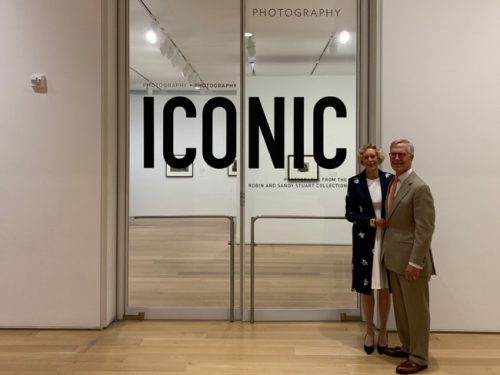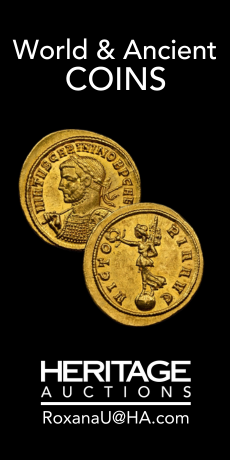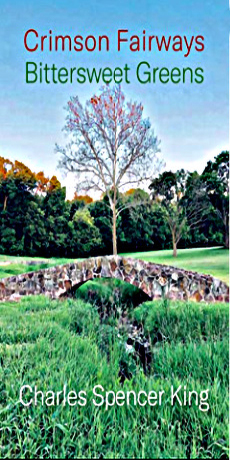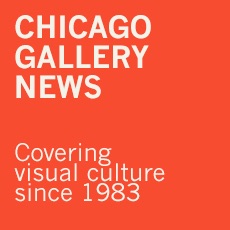Sandy and Robin Stuart share insights about their photography collection, a part of which was showcased last year at The Art Institute.

By David A. F. Sweet
While a display featuring Sandy and Robin Stuart’s photography collection hung on the walls of The Art Institute last summer, Sandy dropped by on a Saturday afternoon to take a look.
Inside the Bucksbaum Gallery, a DePaul University professor was leading students on a tour of the photographs. Sandy followed without identifying himself. The professor stopped at “Rich and Poor of San Francisco” a series of 30 photographs by Jim Goldberg. The professor explained that the photographs had been donated to The Art Institute, and a student asked why.
“Tax benefits,” the professor announced.
The donor was quiet no more.
“I had to speak up,” Sandy recalled. “I said, ‘I assure you we didn’t do it for the tax benefits. We did it because we thought such work should be housed in an institution where it could be studied and enjoyed by a much wider audience than just the two of us.’”

The Art Institute show featured more than 60 prints from Robin and Sandy Stuart’s collection.
Sandy and Robin shared that story while sitting in the living room of their Lake Forest home, where every wall downstairs is hung floor to ceiling with photographs. They include a gargoyle on the Chrysler building in New York by Margaret Bourke White, Le Pont Neuf bridge in Paris by Brassai, and many more.
Sandy’s interest in photography emerged in his teenage years. During the Apollo 11 moon landing in July 1969, he was working for the Chicago Daily News in its darkroom.
“I saw all of the unedited photos from the moon,” he said. “That was an extraordinary experience. I learned a lot about the medium in the darkroom.”

A gargoyle on the Chrysler Building in New York was featured in the show, which was seen by about 75,000 people.
At Princeton University a few years later, Sandy took the school’s first course in the history of photography. The teacher was Peter Bunnell, then deputy curator at the Museum of Modern Art in New York.
“It was the richest and deepest intellectual experience of my life,” Sandy recalled. “The historical perspective he offered, the long arc of the medium that he described in slides and words…his lectures just lit me up.”
Sandy spent long nights in the library, reading Edward Weston’s “Daybooks” or paging through Alfred Stieglitz’s “Camera Work” at a time “when I should have been reading Middlemarch,” he recalled.

Le Pont Neuf bridge in Paris as shot by Brassai.
When Sandy moved to Houston in 1977, where he worked for Fortune magazine, he began to buy photographs. Robin and Sandy married four years later, and she enthusiastically joined him in building a collection.
“I loved taking pictures as a little girl,” said Robin, who fondly remembered going to a show at the Denver Art Museum that displayed the works of Lewis Hine, whose photographs spurred the reformation of child labor laws. “Then I met Sandy, and I thought, ‘This is really cool.’”

“We just buy what we love,” Sandy said. This shot was taken at the Central Park Zoo in New York.
When their children were young, as was this slice of the global art market, dealers would appear at their house carrying portfolio boxes packed with photographs for sale. Their daughter Annie was particularly intrigued by all the prints laid out on the dining room table for consideration. But as the photography collecting market developed — and museums started adding departments dedicated to the genre — the dealers stopped coming, and Sandy and Robin had to travel to them in their own galleries.
The photographs that cover their walls are primarily from the 1920s through the 1970s, with a handful from the 19th century. Their specialization? There isn’t one. Explained Sandy, “We just buy what we love, what we can’t get out of our minds, what we want to look at every day. The price of admission has risen since we began to collect, but we can and do still fall in love.” They have never sold anything in their collection.
The photographs are all black and white, which tend to stand the test of time much better than color when one wants to display them every day — even in a house where all the glass in the frames and windows in the downstairs have the best UV protection available. In fact, their one color shot — of New York Yankee third baseman Greg Nettles, which is not hung in their home — is fading.
“The Art Institute has the same photograph in their cooler, and it’s perfect,” Sandy said.

London bankers are deep in thought in this gem from the collection.
Speaking of which, The Art Institute show — which featured more than 60 of their prints — was seen by about 75,000 people while it was open from May through August in 2019. And when Sandy and Robin toured it with knowledgeable curators and read the captions, they were struck by how much they learned.
Said Robin, “It was as new to us as if we had never seen them before.”
Unsung Gems columnist David A. F. Sweet can be followed on Twitter @davidafsweet. E-mail him at dafsweet@aol.com.







